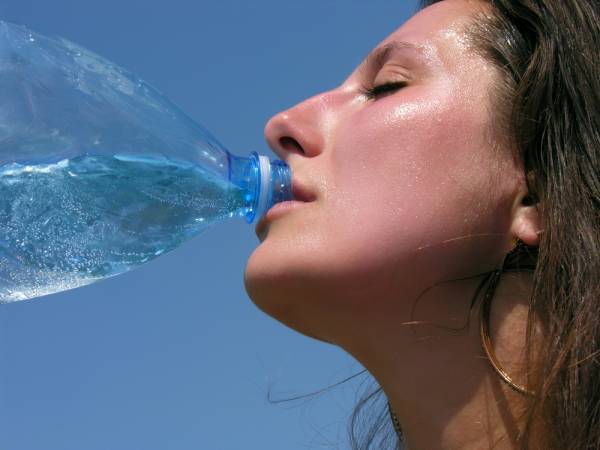Planning is important for many aspects of life. Unfortunately there always exist a variety of obstacles the sole purpose of which seems to be the derailment of said plans.
I had a whole article planned out with video segments and mobility drills. It was awesome. Then I got hurt. I’m not even sure I would call what happened an injury, but it is a condition that is frustratingly common among weightlifters of all kinds. It can adversely affect your functionality and ability to train for several days, if you’re lucky, and possibly weeks, if you’re not.
Today I’m going to talk about lifting headaches: what they are, why they happen, how to avoid them, and what to do if you get one.
Why Do My Eyes Hurt?
While the lifter’s headache is a popular colloquialism the condition is more commonly known as a tension headache. Clinically speaking, they present with a tightening or squeezing pain in a halo pattern around the crown of your skull, originating from your occiput (where your skull meets the top of your vertebrae).
When I get them it feels like someone jammed the needle of a bicycle pump into the base of my skull and began furiously pumping away until my brain becomes at risk of exploding out my eye sockets. But hey, maybe that’s just me.
Pain behind the eyes or sometimes even sensitivity to light can be associated with tension headaches due to their primary cause: tightness or inflammation of the muscles that attach to the occiput and the surrounding musculature. Your occipital nerve is located right there at the back of your skull. When the muscles on your neck get angry, they take it out on the nerve by compressing it. In addition to the headaches, this can cause difficulty in moving your neck, pain with things that increase blood or cranial pressure (like coughing or holding your breath), and, in severe cases, even dizziness, nausea, and vomiting. Fun.
Your Bad Posture While Sitting Isn’t Helping
Like most musculoskeletal pain issues, the root cause is most likely one of positioning. There are a bunch of muscles in and around the back of your neck, but the usual suspects are the upper trapezius, the levator scapulae, and the sternocleidomastoid.
Therapists also frequently identify the scalenes as a common problem area, but my experience has been that pissed off scalenes are more often collateral damage as opposed to a primary cause, and that their particular location makes them an unlikely originator of tension headaches.
The day-to-day causes of tension headaches are usually the result of poor posture, forward shoulders, and an excessively forward head position. When you sit with crappy posture and your head forward, you are simultaneously lengthening the muscles on the back of your neck while asking them to contract to support the increasing weight of your head.
No, obviously the mass of your cranium isn’t spontaneously increasing, but the optimal position for your head and neck is upright and neutral, i.e. a position that requires little energy to maintain because your skull is sitting on top of your vertebral column. Every centimeter your head comes forward significantly increases the strain on both your cervical vertebrae and the muscles that move them because you are putting them at a severe mechanical disadvantage. Your head doesn’t get bigger, but the force it generates for your muscles to resist does. This makes them angry, tight, and inflamed – so don’t do those things.

Quit Staring at the Ceiling When You Lift
In terms of training, the most common cause of these headaches is head position during lifts, particular back squats, deadlifts, and any of the Olympic lifts. During all of these movements the muscles of your upper back are already being used to retract your shoulder blades, which is primarily the domain of the rhomboids and middle and lower traps. When your shoulders are in this position and you then excessively extend your neck (i.e. lean your head back and look at the ceiling) you are now creating a similar situation as sitting with forward head posture.
In this scenario, the scapulae are being pulled down, which lengthens the upper traps to a degree. You are then asking the traps to contract, while staying lengthened at their lower fibers so that you don’t lose tension in your upper back. This causes the upper fibers, the ones attached to your skull, to fire and tighten even harder. When you add to this a metal bar loaded with several hundred pounds, which compress your upper traps, you have a recipe for disaster. Keep your head position neutral during your lifts and that will alleviate the majority of the risk.
Drink Water and Eat Properly
Nutrition and hydration are also significant players here. Poor nutrition can lead to muscle cramping and poor hydration can lead to poor tissue mobility. If your nutrition and hydration are on point, then you can likely get away with some degree of the errors I mentioned above and incur no serious physical penalties. If your nutrition is garbage, you’re prone to cramping, and your tissues are dried out and immobile, the margin of error becomes much smaller.
There is also the necessity of not doing stupid sh*t. In the interest of complete transparency I incurred my headache with a set of twelve deadlifts. Twelve isn’t an outrageous number and I was only using 315lbs, but with regards to my current training cycle, it wasn’t smart. I’ve been doing mostly powerlifting-type training that involves sets of one to five repetitions. There was no real reason for me to try to lift 315×12 other than my ego. That’s how you get hurt.

I Gave Myself a Headache – What Do I Do Now?
The best solution for tension headaches is also the most frustrating – rest. If you don’t have any serious underlying problems and the headache was the result of a single bout of poor mechanics, then it should pass in a few days.
The muscles on the back of your neck are likely somewhat inflamed, so an over-the-counter NSAID may help alleviate the symptoms, but you should check with your doctor before self-medicating. I wouldn’t recommend stretching, particularly within the first 24 hours because it can exacerbate symptoms. Instead, focus on maintaining neutral posture and a neutral head position to let the fire go out on it’s own.
It is important to note there are a host of significant medical conditions requiring immediate care that initially present very much like a tension headache. If your pain begins during a particular movement, increases following the completion of the movement, but then begins to subside within a few minutes, then it’s just a headache. You may have lingering symptoms, and the occurrence of a tension headache predisposes you to reoccurrence, but it’s important to note the difference between recurring headaches and a single, persistent bout of cranial pressure and pain.
If your symptoms do not decrease at all within a half hour of onset, then seek immediate medical attention. Also, if your pain decreases, but you begin to have other symptoms such as weakness in your extremities or trouble swallowing, then seek immediate medical attention. It’s not my intention to frighten you, but I want you guys to stay healthy.
So there you have it. Check your posture, check your mechanics, and check your nutrition. With a little attention, hopefully you can avoid ending up like me. Good luck.
Photos courtesy of Shutterstock.






